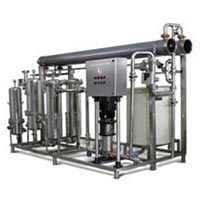
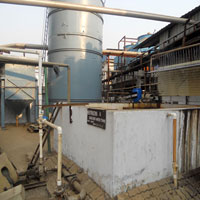
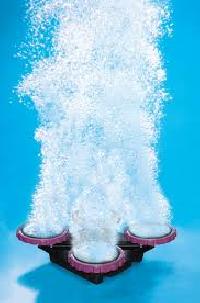
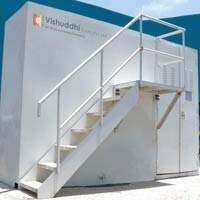
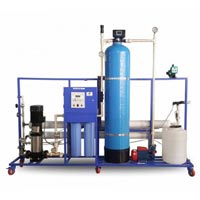
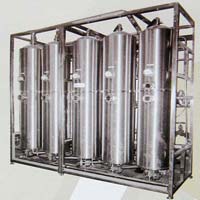

Moving Bed Biofilm Reactor
Get Price Quote
Moving bed biofilm reactor of sizes larger than the openings of filtering mesh. The waste is removed periodically from the mesh by the rake.The waste is then removed from the rake and discharged to the transporter or the waste bin by means of the gravity slide. The screen operation periodicity depends on the automation scheme.

Moving Bed Biofilm Reactor
Get Price Quote
The MBBR system consists of an aeration tank (similar to an activated sludge tank) with special plastic carriers that provide a surface where a biofilm can grow. The carriers are made of a material with a density close to the density of water (1 g/cm3). An example is high-density polyethylene (HDPE) which has a density close to 0.95 g/cm3. The carriers will be mixed in the tank by the aeration system and thus will have good contact between the substrate in the influent wastewater and the biomass on the carriers.[2] To prevent the plastic carriers from escaping the aeration it is necessary to have a sieve on the outlet of the tank. Moving Bed Biofilm Reactor (MBBR) processes improve reliability, simplify operation, and require less space than traditional wastewater treatment systems. MBBR technology employs thousands of polyethylene biofilm carriers operating in mixed motion within an aerated wastewater treatment basin. Each individual biocarrier increases productivity through providing protected surface area to support the growth of heterotrophic and autotrophic bacteria within its cells. It is this high-density population of bacteria that achieves high-rate biodegradation within the system, while also offering process reliability and ease of operation. This technology provides cost-effective treatment with minimal maintenance since MBBR processes self-maintain an optimum level of productive biofilm. Additionally, the biofilm attached to the mobile biocarriers within the system automatically responds to load fluctuations. Advantages The MBBR system is considered a biofilm process. Other conventional biofilm processes for wastewater treatment are called trickling filter, rotating biological contactor (RBC) and biological aerated filter (BAF). Biofilm processes in general require less space than activated sludge systems because the biomass is more concentrated, and the efficiency of the system is less dependent on the final sludge separation. A disadvantage with other biofilm processes is that they experience bioclogging and build-up of headloss. [1]
Best Deals from Moving Bed Biofilm Reactor